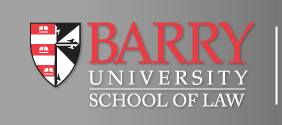Article Title
It's All Downhill From Here: How the Nation's Dispute With Clean Water Act Jurisdiction Is Solved
Abstract
What makes the United States one of the most prosperous and safest nations in the modern world? Perhaps it is the durable economy, the strong military force, or the Constitutional protections. What most Americans take for granted, however, is something people in many nations base their entire lives around: safe, clean water. Promulgated in 1972, the original Clean Water Act has been opposed and amended over the course of forty years. No provision, however, has been as hotly contested as the § 404 program for “dredge and fill” permits. Specifically, this section led to divisions on what constitutes “water” that is subject to Clean Water Act jurisdiction and what does not. Hoping to solve the confusion once and for all, the EPA’s “Clean Water Rule” was published in 2015. The Rule, however, was immediately met with litigation and was hit with a nationwide stay by the Sixth Circuit.
This article is the first to collectively address the pending arguments against the Rule while arguing that the adoption of Justice Kennedy’s significant nexus test was the best option. When the Sixth Circuit makes its decision on the merits, the decision will likely make it to the Supreme Court. The Court should find that contrary to many allegations, the Rule does not violate the Administrative Procedure Act, the Commerce Clause, or the Clear Statement Canon. Further, by applying the 2016 Hawkes Co. ruling, the Court should be able to ease the minds of the Rule’s opponents while confirming the Rule on the merits.
Recommended Citation
Newman, Spencer. H. (2017) "It's All Downhill From Here: How the Nation's Dispute With Clean Water Act Jurisdiction Is Solved," Environmental and Earth Law Journal (EELJ): Vol. 7 : Iss. 1 , Article 1.
Included in
Administrative Law Commons, Admiralty Commons, Animal Law Commons, Energy and Utilities Law Commons, Environmental Law Commons, Jurisprudence Commons, Land Use Law Commons, Law and Society Commons, Natural Resources Law Commons, Oil, Gas, and Mineral Law Commons
